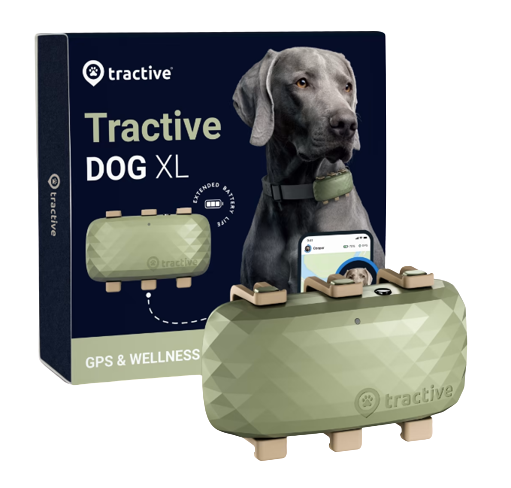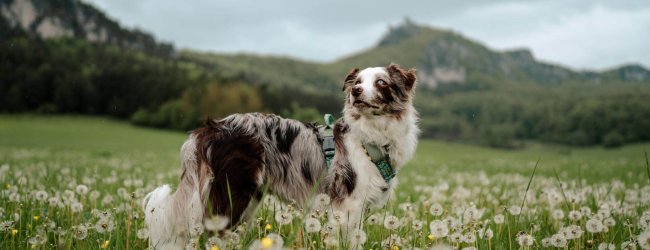Newfoundlands: Your Friendly, Furry, Four-Pawed Protectors
You might've spotted a Newfoundland dog because of it's size - these gentle giants are popular family pets. But did you know they're also famous for being heroic water rescue dogs?
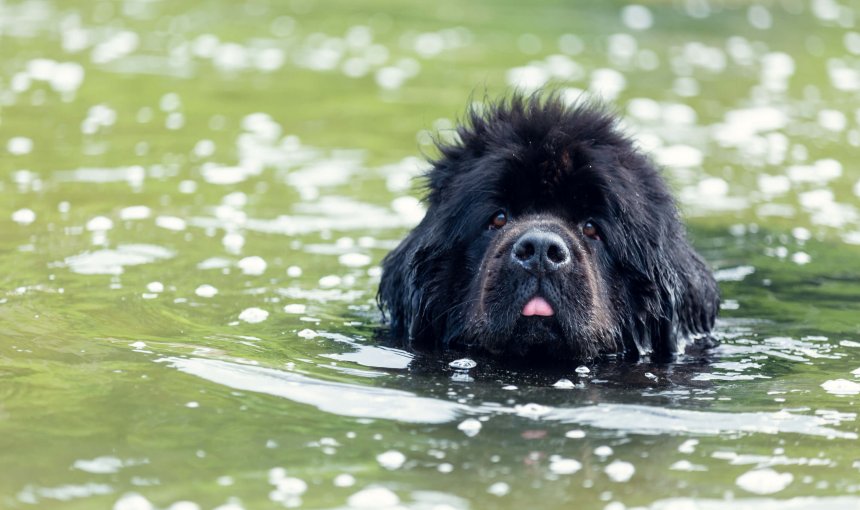
Maybe you’ve heard of the Newfoundland dog, seen it in a documentary, or even cuddled this giant teddy bear. Plus – they’re a dog breed that’s built for the water. Here, we cover some of the incredible ways these gentle giants have risked their lives to save people from drowning – and why they make such paw-some family dogs.

Find out how your dog spends their time.
Read moreThe origin of Newfoundlands
Newfoundlands (or Newfies) originate from a cross of large, strong dogs bred on the Canadian island of Newfoundland. Because of their strength and ability to withstand extreme weather conditions, they were popular working dogs for 18th and 19th century European fishermen – especially for pulling heavy loads.
In fact, these giants love the water – you’ll find your Newfie happiest when splashing around in a pond or a pool. Although they’re now mostly family pets and no longer work exclusively in fishing or as rescue dogs, they still retain their unique physical characteristics, like webbed feet, to this day.
Appearance & temperament
Standing at 70 centimeters (or around 2 feet) at the withers, Newfies are classified as “giant” dogs. Because of their size and their lush, mostly dark coats, you might even mistake one for a bear! Newfoundland coats can be solid blacks or browns, or a combination of black, white, brown, or grey. Plus, these big, cuddly bears weigh between 55-70 kilograms (121-154 pounds) – which might make an enemy think twice before attacking.
But despite their size and strength, Newfies are considered one of the gentlest, friendliest of dog breeds. They tend to be highly intelligent and calm temperament-wise. They’re also quite sociable towards humans and animals alike. Newfies also like to be on the move – you can motivate one to play quite easily – and they have a keen sense for the needs of people.
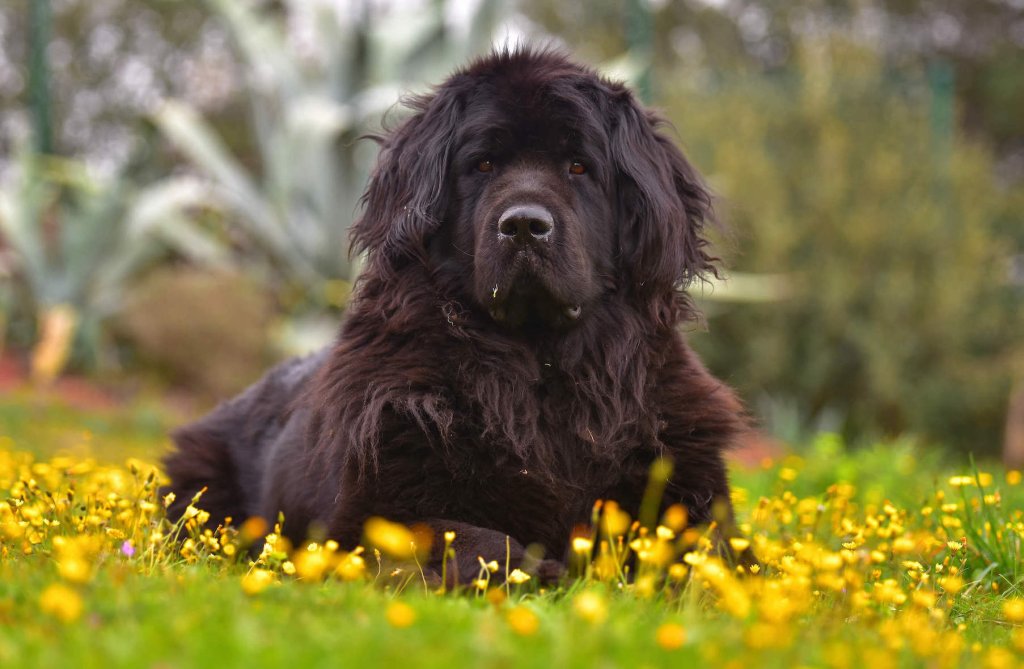
Newfoundlands & their role in water rescue
Newfoundlands don’t just love being in the water – they also make themselves useful while splashing around. Along with their instinct to rescue people who are drowning, Newfies’ courageous temperaments, strong builds, water-repellent coat, and webbed feet make them perfect as water rescue dogs. In a situation where every second counts, you can rely on your big old cuddly Newfie to have your back.
How Newfies are water rescue superheroes
In the past, Newfoundlands helped sailors and fishermen with their work – but today, they’re trained as water rescue dogs. With strength and excellent swimming skills as their superpowers, they regularly save people’s lives. As water rescue dogs, Newfies work together with their handlers (usually a lifeguard) to go on missions as a team.
When things get serious and someone needs to be rescued from drowning, these brave four-legged superheroes can tug along a lifeboat or life jacket to them, offer a harness that they can hold on to, and pull them ashore. Newfies can also rescue unconscious people and pull entire boats filled with people, support materials, and more.
When you’re drowning, it’s pretty normal to panic – but this might make it more likely you’ll injure yourself, or drown even faster. And that’s the beauty of using a Newfoundland as a water rescue dog: many people feel an immediate sense of calm and safety when they see one swimming towards them. Which, in turn, makes rescue easier.
Here’s one of the institutions where Newfoundlands train and grow with their superpowers: the Italian School of Water Rescue Dogs, founded by Ferruccio Pilenga.
The Italian School of Water Rescue Dogs
Along with Labradors and Retrievers, Newfoundlands have been trained at the Italian School of Water Rescue Dogs since 1989. Training starts from the time they’re puppies – and after one year of hard work, Newfies are officially deemed active and ready to serve as water rescue dogs.
Only the largest and strongest of these dogs end up serving, as a water rescue dog must weigh at least 65 pounds (or 30 kilograms). No wonder, since they’re supposed to be able to pull up to 30 people in a lifeboat after they’re finished with training.1 Water rescue dogs should also be able to swim against the water current in any weather – while people hold on to them to be saved from downing. With their top-notch training at the Italian School, you can rely on them 100% in an emergency.
And the best part? Training is more like play, tailored to how Newfies respond best. Their first “water rescue missions” are toys. Slowly, gradually, these fluffy superheroes then learn to target people as well and to bring them safely to shore or on to a boat.
Newfies aren’t just intelligent, strong, and with tremendous endurance – they’re brave too. Water rescue is always a demanding job, involving long and difficult stretches of water or jumping from a helicopter. In this video, you can watch the brave dogs jumping into the water yourself – and the great things they’re up to at the Italian School of Water Rescue Dogs:
The Tractive GPS: Speeding up water rescues around the world
With its LIVE tracking and Location History features, search and rescue (SAR) teams depend on the Tractive GPS on their missions. And a key place where it adds value? Water search and rescues. In fact, Ontario-based SAR expert, William Bolton, relies primarily on his dog Sheba’s Tractive tracker to aid them on their searches.
In his words:
While I’m out there, I don’t have time to be constantly checking my phone – I have to look at Sheba, the boat, and the water. So with Tractive’s Location History, I can go back after the fact to verify and validate our search area.
Maybe your Newfie isn’t a water search and rescue hero yet – but they’re instinctively drawn to the water by nature. Making them naturally talented in sniffing out missing persons and helping them get to safety. So we’d always recommend equipping your buddy with a Tractive GPS tracker – so you never have to worry about where they are if they’re off wandering (or swimming) somewhere far off.
For a Newfie, we’d recommend a Tractive GPS tracker for dogs (XL). Built with love for large dogs, with extra-long battery life – and also 100% waterproof.
The Newfoundland as a family dog
Because of their gentle and social natures, Newfoundlands are growing increasingly popular as family pets. They both exude a sense of comfort and get along well with children and other pets. Newfies tend to be very easy to take care of – you can take them anywhere around you, provided you’ve got the space for it! (And don’t worry, they’re aware of their size and tend to be extra careful around children and the elderly.)
Activities & habits
Because of its size, a house with a yard is a good prerequisite for a Newfoundland – they need plenty of exercise and love to run and play. And if you’re thinking of equipping your buddy with a GPS tracker, you’re in luck. With Tractive’s Wellness monitoring features, you can keep track of your Newfie’s sleep and activity levels – so you can encourage them to get their daily exercise and stay healthy.
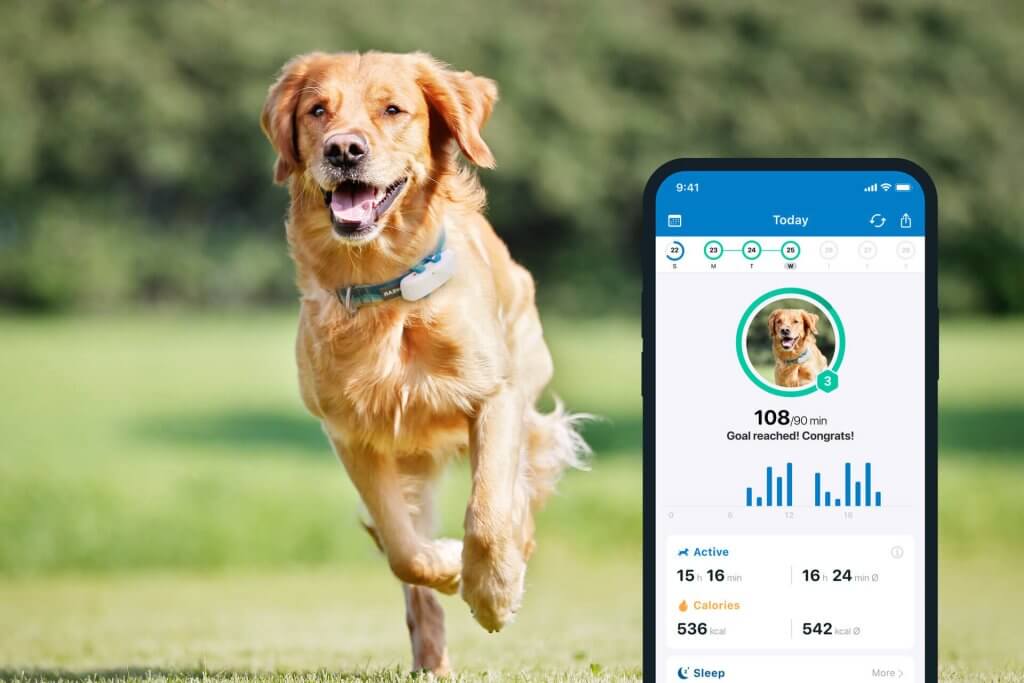
Ideally, your Newfie can swim on a regular basis as well – it protects their musculoskeletal systems from pressure on their joints which can occur as a result of their weight and rapid growth. (Plus, it’s fun and plays a role in their emotional wellbeing.) Bringing back a ball or a Frisbee from the water is just the thing for your Newfie.
Because Newfoundlands tend to be very hardy, they’re likely to adapt well to the outdoors in any season. Their fur coats are both weather-proof and waterproof and need regular brushing to stay well-groomed. But do be careful during the summer – Newfies aren’t the most fond of hot weather. So make sure to always provide them with shady spots (like a cool garage) when it’s warm outdoors.
Your gentle giant is also highly affectionate and a big cuddler – so don’t keep them waiting! Newfies are happiest when they’re with family. So make sure you don’t leave them alone at home too often because they’ll miss the social contact and closeness.
Raising a Newfoundland
With Newfies, it’s important to train them consistently due to their size. If you raise them as a puppy, you should start right away. In general, Newfoundlands are considered willing to learn and tend to respond quickly to training. However, they’re also large and somewhat sluggish, so you may need to gently persuade them into it. But once motivated, they’re fully involved. Newfoundlands react best to a patient, loving, consistent approach, since they’re quite sensitive by nature – so they won’t respond as well to rough and insensitive training.
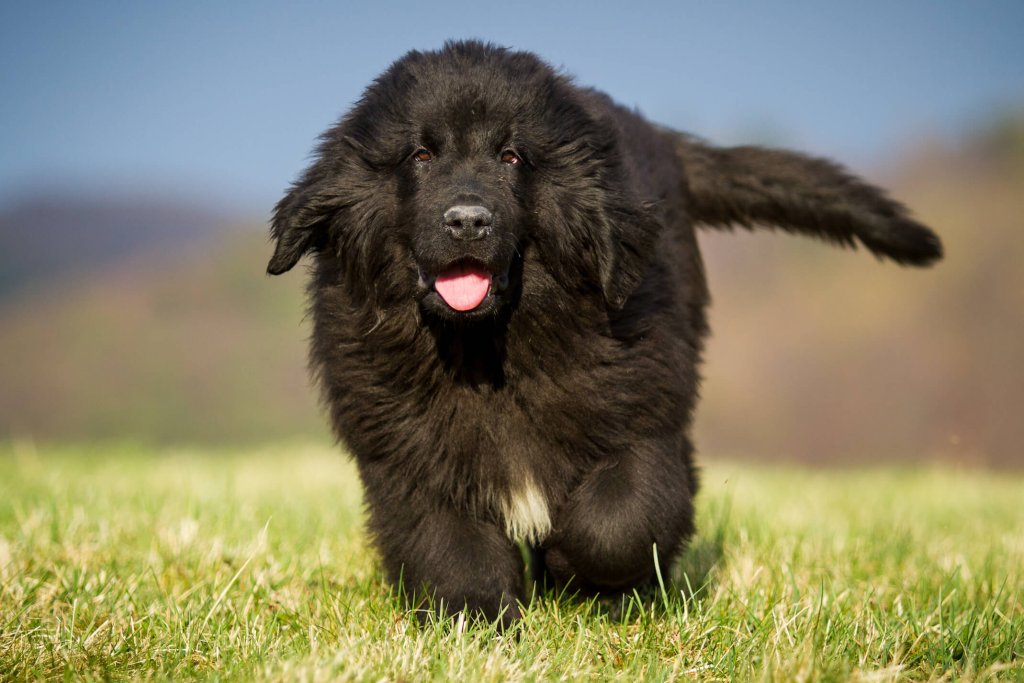
Buying a Newfoundland
Some families might give away their Newfoundlands from time to time – so it’s always a great idea to contact your local shelter first. (Maybe you can give one of the dogs a great forever home there!) But if you’ve decided you want to raise a puppy, make sure to contact a reputable breeder and take your time exploring your options.
With the right breeder, you can ensure your puppy is healthy and you’re not unknowingly supporting poor breeding conditions. Most breeders and vets also agree that it’s best you bring home a puppy once they’re at least 8 weeks old. Some US states and other countries may even enforce this requirement by law.
What to watch out for when looking out for a dog breeder
Here are some signs to watch out for, which can help you get an impression of a great dog breeder.
- Always start with researching the potential breeder beforehand. Their website is usually a good indicator.
- Keep an eye out for the condition of the puppies and the site they’re growing up in.
- Find out how the puppies’ mothers are doing and their condition.
- Make sure to ask about how many litters are bred each year. In general, your breeder shouldn’t be aiming for more than 2 litters per year.
- What’s your impression of the breeder themselves? Ideally, they should be interested in finding the best place for their dogs.
- Ensure your breeder has all their paperwork ready (like breeding approval, the correct licenses, information about the puppies, and more.)
- The price of a Newfoundland puppy can vary depending on the breeder, but could average between $1200-$3000.
In love with a Newfie and want to give them a forever home with your family? Great idea! And if you’re a surfer, swimmer, or kayaker yourself, check out these 19 dog breeds that absolutely love water.
Liked this article? Share it with a fellow dog lover!
